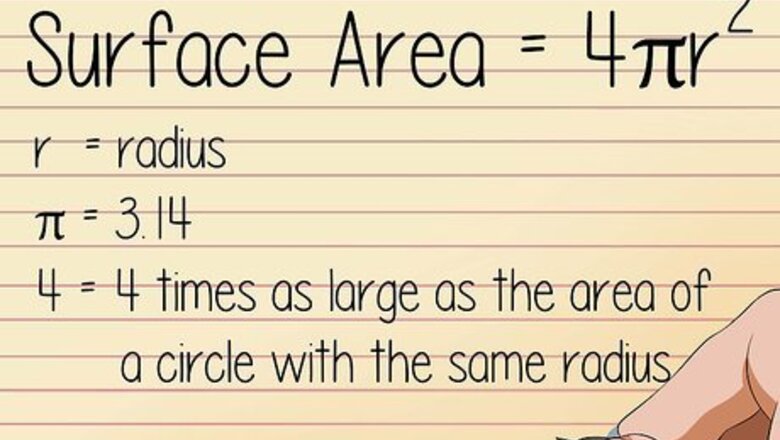
views
X
Research source
Discovered by the Greek philosopher and mathematician Aristotle thousands of years ago, the equation is relatively simple, even if its origins are not. To find the surface area of a sphere, use the formula (4πr2), where r = the radius of the circle.
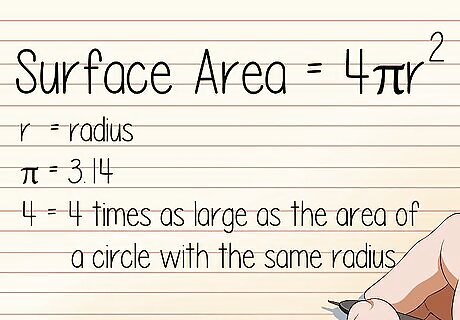
Know the parts of the equation, Surface Area = 4πr. This nearly ancient formula is still the easiest way to determine the surface area of a sphere. Using almost any calculator, you can plug in the radius to get the surface area of your sphere. r, or "radius: The radius is the distance from the center of the sphere to the edge of that sphere. π, or "pi:" This incredible number (equalling roughly 3.14) represents the ratio between a circle's circumference and diameter, and is useful in all equations with circles and spheres. It is commonly shortened as π = 3.1416, but there are an infinite number of decimals. 4: For somewhat complex reasons, the surface area of a sphere is always 4 times as large as the area of a circle with the same radius.
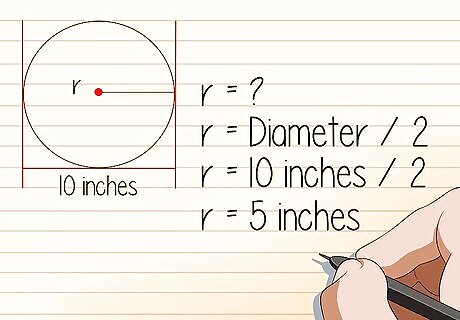
Find the radius of the sphere. Sometimes your problem will supply you the radius, and other times you will have to find it yourself. If you are given the diameter of a circle, simply divide the diameter by 2 to get the radius. For example, a sphere of diameter 10 inches has a radius of 5 inches. Advanced Tip:If you only know the volume of a sphere, you need to do a little more work to get the radius. Divide the volume by 4π, then multiply that answer by 3. Finally, take the cube root of this answer.
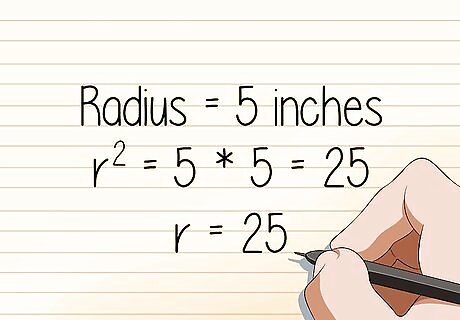
Square the radius by multiplying it by itself. You can either do this by manually multiplying (5 = 5 * 5 = 25) or by using your calculator's "square" function (sometimes labeled as "x").
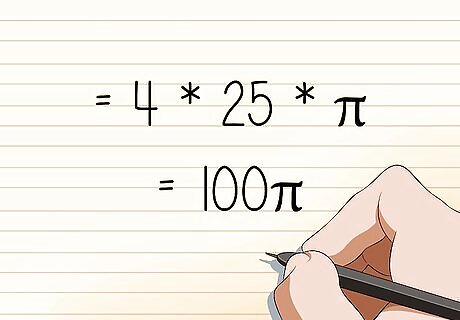
Multiply this result by 4. While you can multiply either 4 or pi first, it is generally easier to start with 4 since there are no decimals to multiply yet. If our radius is 5, like above, you would be left with 4 * 25 * π, or 100π.
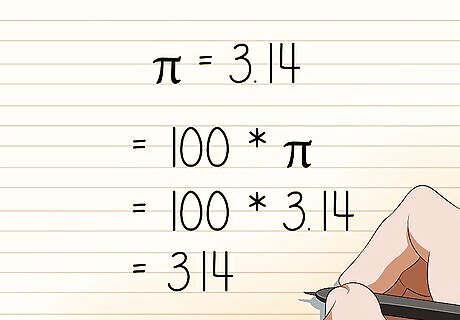
Multiply the results by pi (π). If your problem says "exact value", write the symbol π after your number and call it done. Otherwise, use the approximation π=3.14 or your calculator's π button. 100 * π = 100 * 3.14 100π = 314
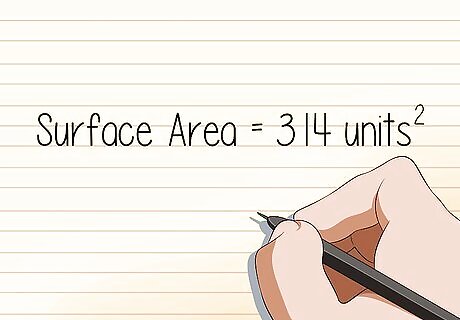
Remember to add you units to the final answer. Is your sphere's surface area 314 inches big, or 314 miles (505 km) big? The units need to be written as "units," because this denotes area, otherwise known as "square units". The full answer to the sphere in the pictures is: Surface Area = 314 units. The units you use are always the same ones used to measure the radius. If the radius is in meters, the answer will be in meters. Advanced Tip: We square the units because area measures how many flat squares we could fit on the surface of the sphere. Say we measure the practice problem in inches. This means on a sphere where r=5, we could fit 314 squares on the surface of the sphere if the sides of every square are 1 inch long.

Practice with an example. If the radius of a sphere is 7 centimeters, what is the surface area of that sphere? 4πr r = 7 4 * π * 7 49 * 4 * π 196π Answer: Surface Area = 615.75 centimeters, or 615.75 square centimeters.
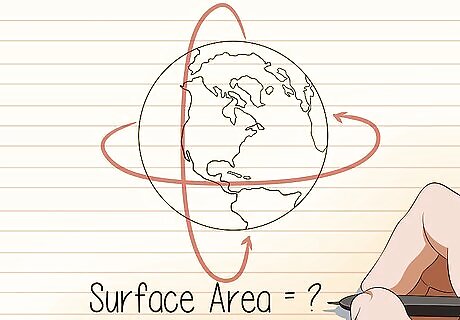
Understand surface area. The surface area of a sphere is the area covering the outside of the sphere -- think of it as the rubber covering a kickball or the surface of the earth. Because it is curved, it is much harder to measure the surface area of a sphere than a box, so we need an equation to determine the area. Rotating a circle around its axis (the center point) will produce a sphere. Think of spinning a coin on the table and how it appears to form a sphere. While it won't be explained here, this is where our equation comes from. Advanced Tip: Spheres have a smaller surface area per volume than any other shape -- that means it can hold more things in a smaller area than any other shape.




















Comments
0 comment